Hundreds of billions of locusts, fueled by conflict and climate change, are swarming East Africa – 400-fold increase in their numbers by June 2020 projected

By Madeleine Stone
14 February 2020
(National Geographic) – East Africa is in the midst of a crisis that sounds like something out of the Book of Exodus: A plague of locusts is spreading across the region, threatening the food supply of tens of millions. City-sized swarms of the dreaded pests are wreaking havoc as they descend on crops and pasturelands, devouring everything in a matter of hours. The scale of the locust outbreak, which now affects seven East African countries, is like nothing in recent memory.
The insects behind the mayhem are desert locusts, which, despite their name, thrive following periods of heavy rainfall that trigger blooms of vegetation across their normally arid habitats in Africa and the Middle East. Experts say a prolonged bout of exceptionally wet weather, including several rare cyclones that struck eastern Africa and the Arabian Peninsula over the last 18 months, are the primary culprit. The recent storminess, in turn, is related to the the Indian Ocean Dipole, an ocean temperature gradient that was recently extremely pronounced, something that’s also been linked to the devastating bushfires in eastern Australia.
Unfortunately, some experts say it may be a harbinger of things to come as rising sea surface temperatures supercharge storms and climate change tips the scales in favor of circulation patterns like the one that set the stage for this year’s trans-oceanic disasters.
“If we see this continued increase in the frequency of cyclones,” says Keith Cressman, senior locust forecasting officer with the Food and Agriculture Organization, “I think we can assume there will be more locust outbreaks and upsurges in the Horn of Africa.” […]
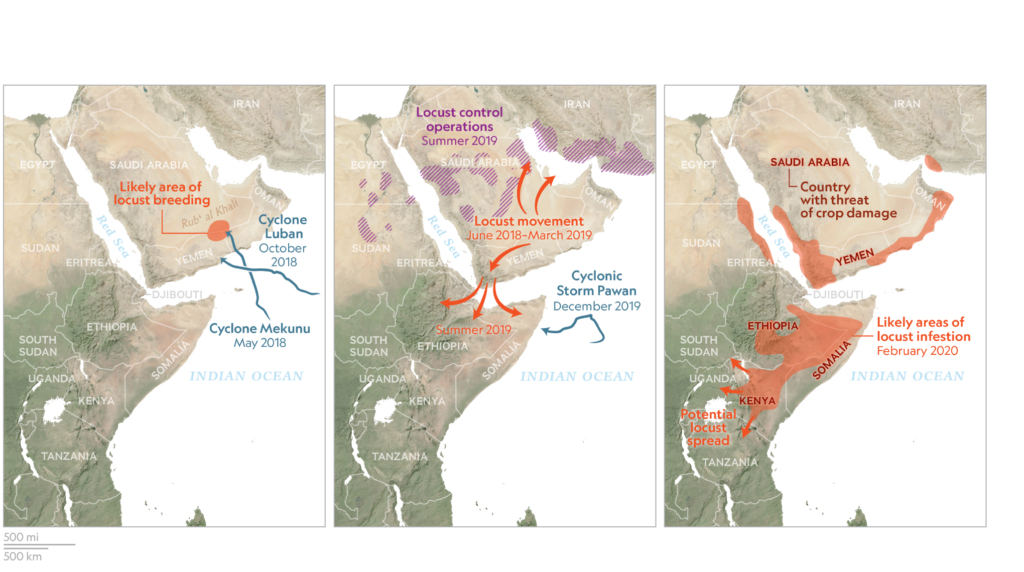
The worst of the outbreak may be yet to come. The fall rains, Cressman says, “tipped the situation into something not only very usual but very dangerous” by effectively enabling at least another two generations of locust breeding.
By June 2020, he fears the desert locusts will have increased their numbers 400-fold compared with today, triggering widespread devastation to crops and pastures in a region that’s already extremely vulnerable to famine. Over 13 million people in Djibouti, Eritrea, Ethiopia, Kenya, and Somalia experience “severe acute food insecurity,” according to the FAO, while another 20 million are on the brink.
“It’s all about timing,” Cressman says, explaining that most crops are planted at the beginning of East Africa’s first rainy season, in March or April. “When that rainy season starts and farmers are ready to plant, that will coincide with this new generation of swarms.” [more]
A plague of locusts has descended on East Africa. Climate change may be to blame.
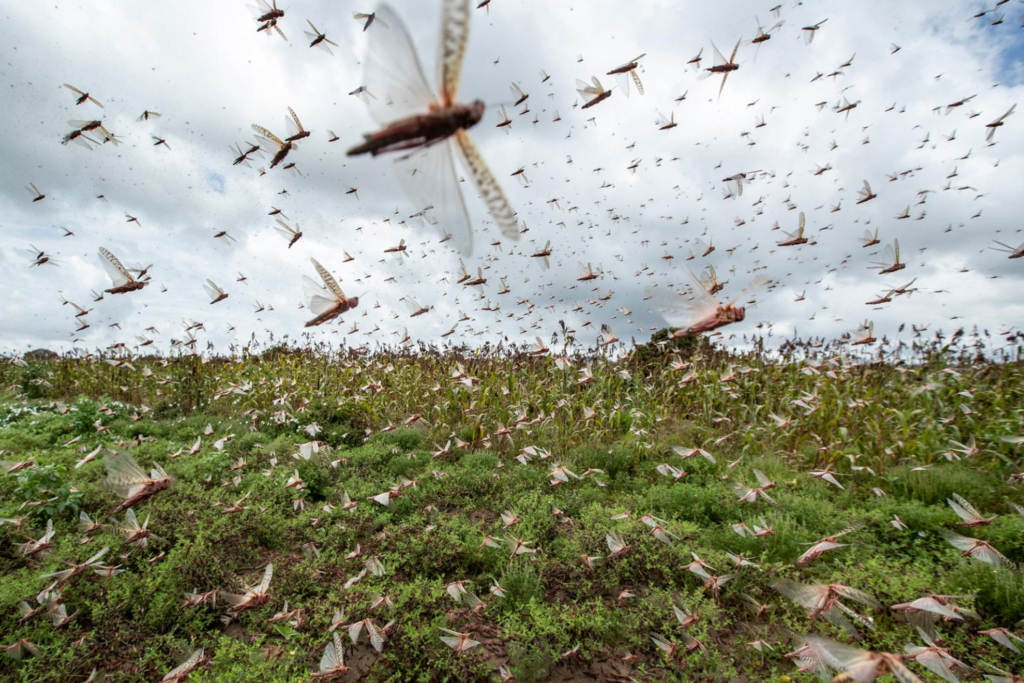
Hundreds of billions of locusts — fueled by conflict and climate change — are swarming East Africa
By Max Bearak
12 February 2020
BORENA ZONE, Ethiopia (The Washington Post) – From a distance, it looks like billowing smoke. But as it nears, the swarm of locusts comes into focus: billions upon billions of them, thick as a blizzard, uncountable as raindrops, a jaw-dropping procession of the ravenous creatures of biblical infamy, flailing and flapping in the air, blocking out the sun like a bad omen.
The pests, known and feared by the world’s most ancient civilizations, are invading southern Ethiopia and neighboring parts of Kenya in numbers not seen in generations.
They breed freely in areas outside government control in conflict-ravaged Yemen and Somalia, and they reach their voracious adolescence while migrating west toward the feeding grounds of lusher inland Africa. Unseasonable rain, linked to a climate-change-driven event in the Indian Ocean, has turned the region into a buffet for locusts. […]
A major humanitarian crisis looms. Locusts can decimate cropland, crippling farms and leaving markets empty and livestock with nothing to eat. Around 19 million people already face high levels of food insecurity in East Africa.
“Our only option is to try to kill them all,” said Bayeh Mulatu, a pest control expert at the United Nations’ Food and Agriculture Organization (FAO) in Addis Ababa, Ethiopia’s capital. A similar surge of locusts in northern Ethiopia in 1954 devoured nearly 100 percent of green-leaf plant cover and, along with a drought, caused a year-long famine, Bayeh said.
Despite technological improvements, the prospects of control remain slim. Hundreds of swarms have hatched in the sandy soil of Yemen and Somalia’s coastal plains, where little to nothing is being done to control them. Ethiopia has only three operational planes to spray insecticides, and Kenya has five. Meanwhile, the biggest of the swarms are getting closer every day to Ethiopia’s breadbasket in the Great Rift Valley, where smaller swarms are already stripping some farms.
“There is no such thing as containment of locusts,” Bayeh said. “There is only control. Only killing.”
The United Nations says $76 million is needed immediately to increase spraying capacity.
The funding is “required by, actually, now,” said FAO chief Qu Dongyu at a recent news briefing. “If after April the money has come, it’s somehow useless.”
Ethiopia is likely to be hit the hardest by the infestation, which began last June but is only now reaching epic proportions. While giant swarms have been reported in Kenya, and smaller ones in Djibouti, Eritrea, Sudan and Somalia, Ethiopia is the only country among them where adolescent or “gregarious” swarms are expected to descend en masse on cropland. The locusts moved into Uganda this week and may move into South Sudan, the United Nations warned.
“Our resources are not enough,” said Zebdewos Salato, director of plant protection at Ethiopia’s Agriculture Ministry. “Soon we may see the locusts passing over the whole country, into the major crop-growing regions.”
[more]
Hundreds of billions of locusts — fueled by conflict and climate change — are swarming East Africa
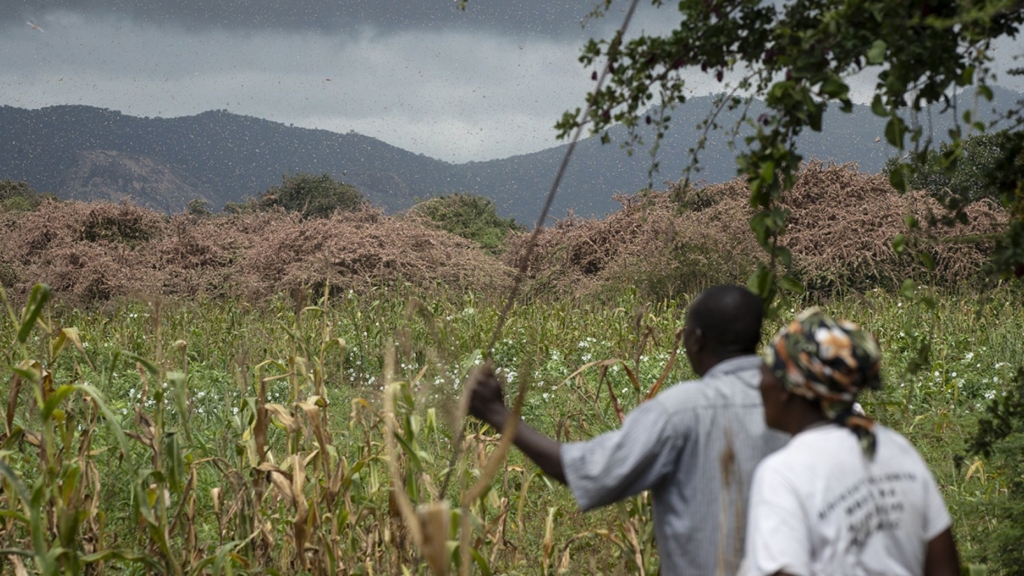
Locust swarms and climate change
6 February 2020 (UNEP) – East African nations have been battling with swarms of desert locusts since the beginning of 2020. In what is being called the worst outbreak the region has seen in decades, the Food and Agriculture Organization of the United Nations warns that rising numbers of desert locusts present an extremely alarming threat to food security and livelihoods in the Horn of Africa.
According to the organization’s recent update on the desert locust upsurge, the current situation may be further worsened by new breeding that will produce more locust infestations in Ethiopia, Kenya and Somalia and possibly further afield.
We interviewed Richard Munang, United Nations Environment Programme (UNEP) expert on climate and Africa, on the relationship between environmental factors, climate change and the locust emergency.
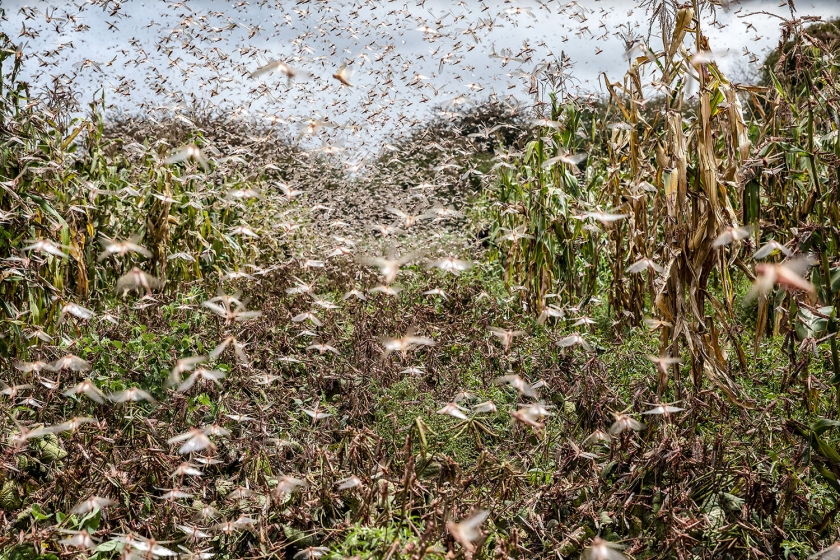
What is the relationship between locusts and and climate change?
During quiet periods—known as recessions—desert locusts are usually restricted to the semi-arid and arid deserts of Africa, the Near East and South-West Asia that receive less than 200 mm of rain annually. In normal conditions, locust numbers decrease either by natural mortality or through migration.
However, the last five years have been hotter than any other since the industrial revolution and since 2009. Studies have linked a hotter climate to more damaging locust swarms, leaving Africa disproportionately affected—20 of the fastest warming countries globally are in Africa. Wet weather also favours multiplication of locusts. Widespread, above average rain that pounded the Horn of Africa from October to December 2019 were up to 400 per cent above normal rainfall amount. These abnormal rains were caused by the Indian Ocean dipole, a phenomenon accentuated by climate change. [more]

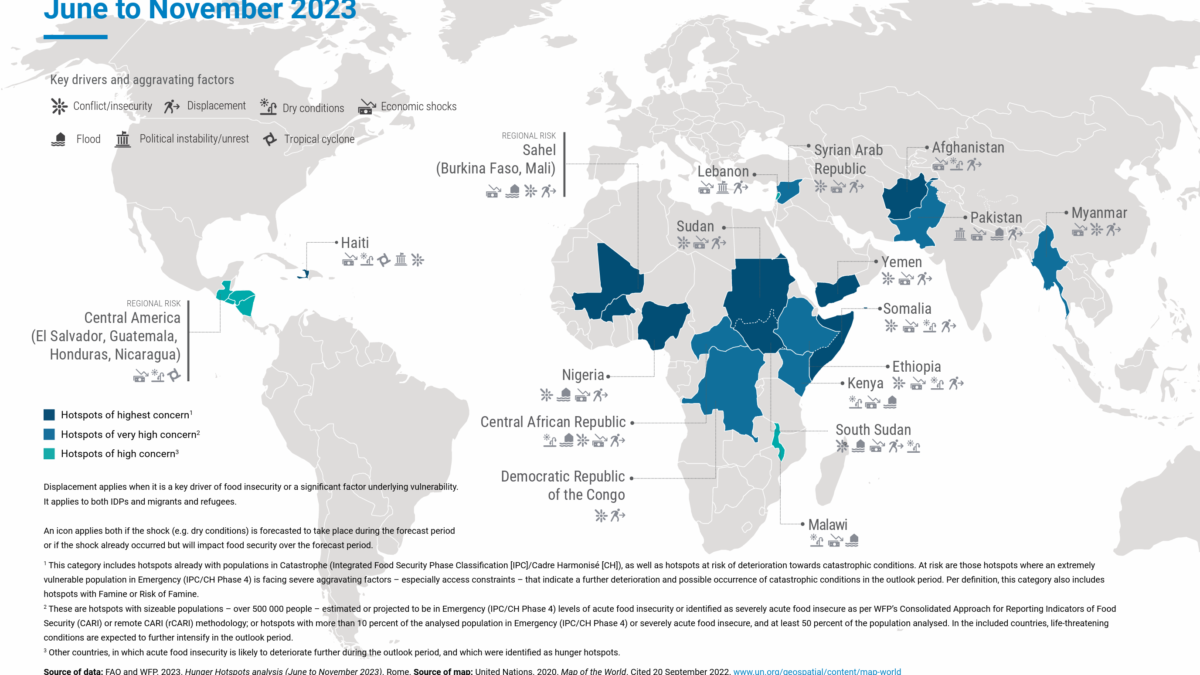
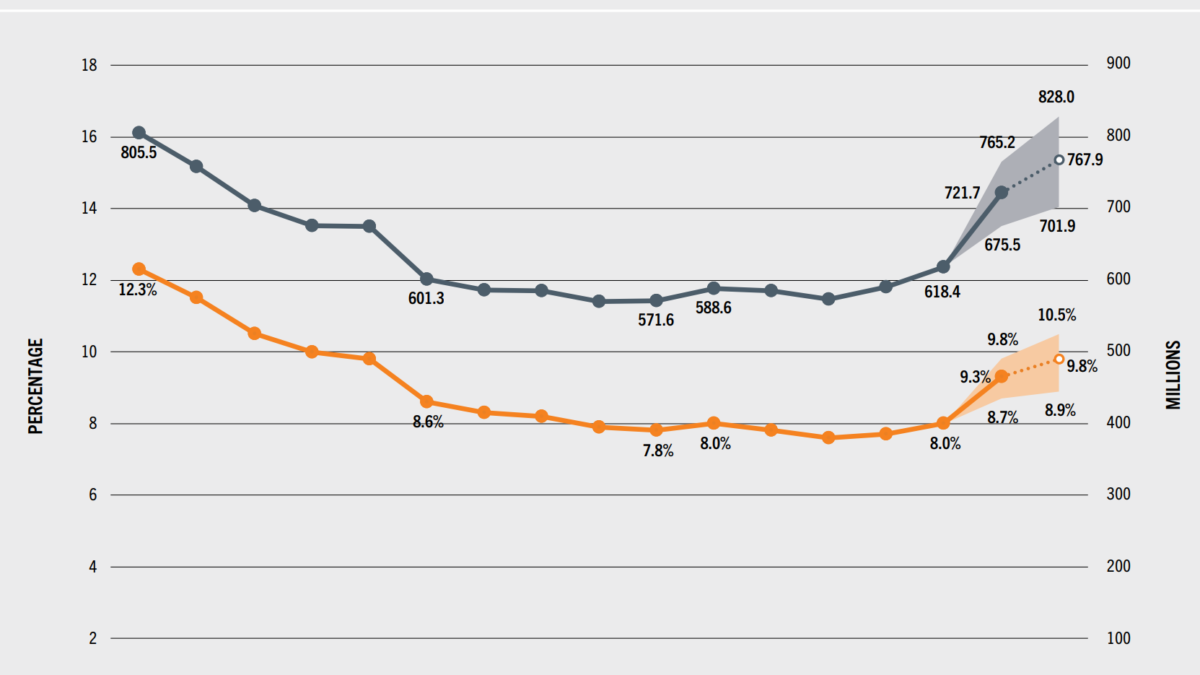
Since we’re talking about the bible, the bible also says that God created everything and that his creation is good. Therefore God created locusts and locusts are good.